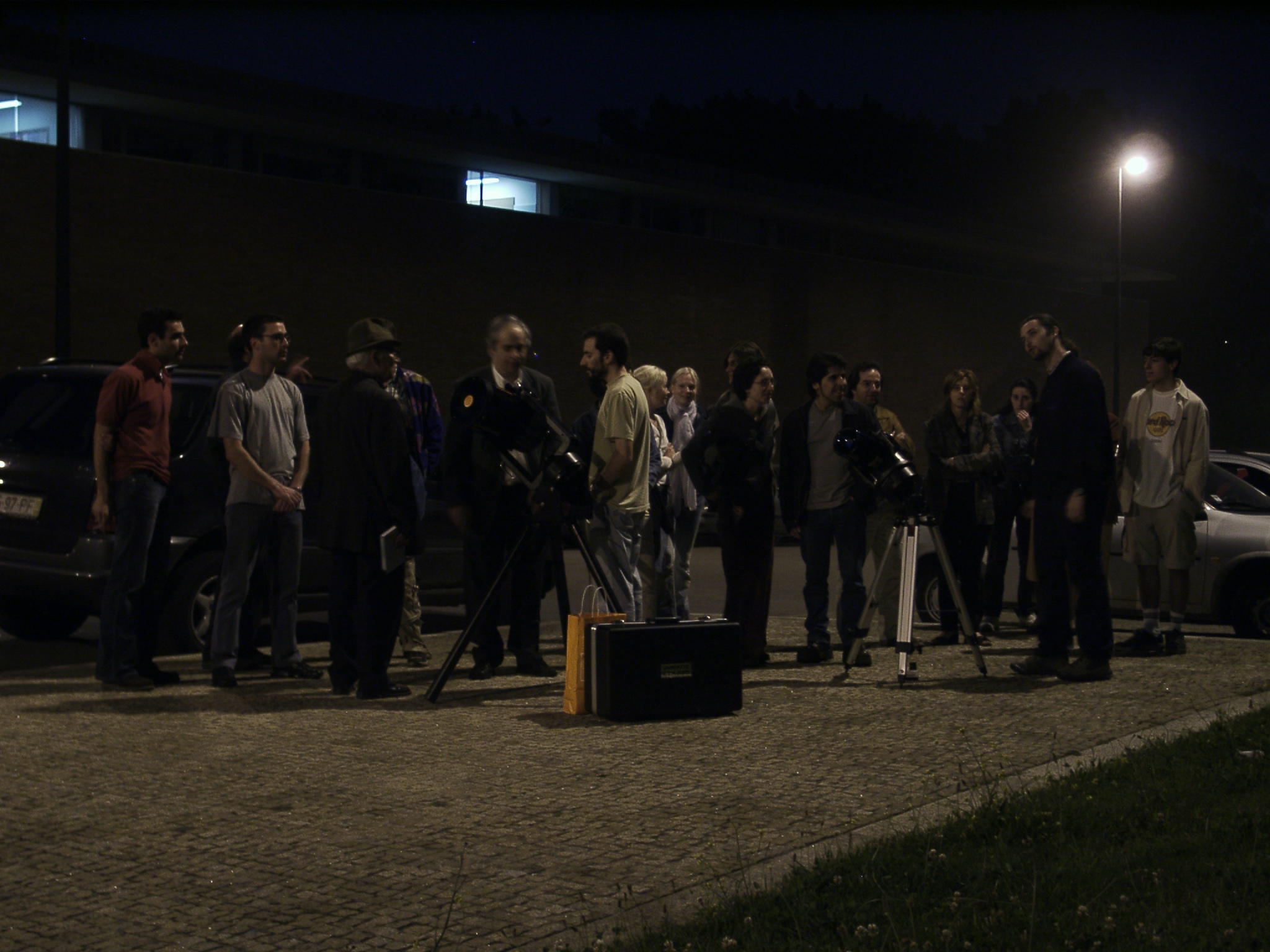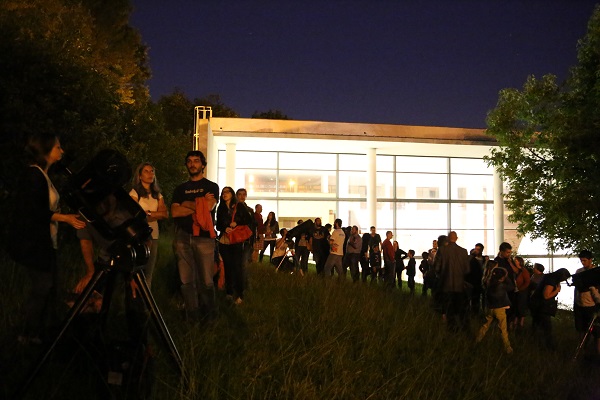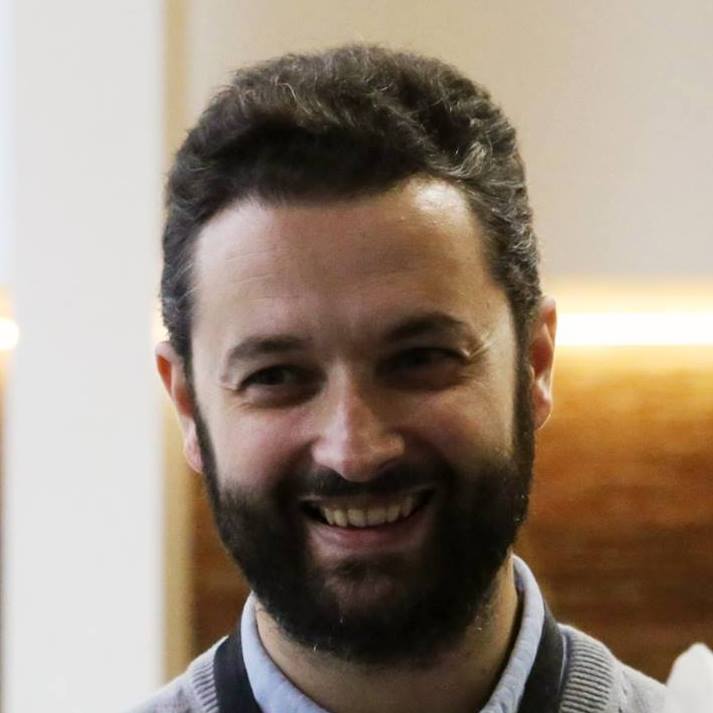GAM 2017 Blog
- Published: Sunday, April 23 2017 00:00
By Ricardo Cardoso Reis (Planetário do Porto & Instituto de Astrofísica e Ciências do Espaço)
The Planetário do Porto - Centro Ciência Viva (Porto Planetarium - Living Science Center) opened to the public in November 1998, but its history actually started years before.
It is a rare case of a science center managed by a research center. And when it was founded in 1989, the Centro de Astrofísica da Universidade do Porto (and the Instituto de Astrofísica e Ciências do Espaço, since CAUP’s merger with its counterpart in the University of Lisbon) has in its statutory objectives the support and promotion of Astronomy, through research, education, activities for schools and science outreach. That’s why, as early as 1990, CAUP started a portable planetarium program, which still travels to schools.
Leaping forward to 1997, CAUP took an active role in the very first “Astronomy in the Summer” national activity, organized by Ciência Viva, the Portuguese national agency for scientific and technological culture.
So, public observation with telescopes was something we already had experience with when the planetarium opened. That’s why about a year later, in January of the year 2000, we decided to create “Mais Perto das Estrelas” (Closer to the Stars), a walk in, free or charge, monthly telescope observation night.
 The first incarnation of Closer to the Stars, outside the planetarium building, in 2002.
The first incarnation of Closer to the Stars, outside the planetarium building, in 2002.
Initially, it was just observation. Every second Thursday, starting at 21h00, we’d set up our telescopes outside the planetarium, and stayed for as long as we had visitors, which sometimes meant one lone straggler that stayed past midnight. Since Friday is a work day, and schools arrive early in the morning for planetarium shows, eventually we had to set 23h00 as the time limit.
Bad weather would sometimes force us to cancel the activity, but despite that (and our many warnings that the activity would not happen with bad weather), some people would still show up, sometimes after driving for dozens of km, just to return home disappointed.
Because of those cases, we started to use the wonderful resource at hand – the Porto Planetarium dome. Every “Closer to the Stars” now starts with a mini presentation of about 10 minutes, showing the sky that night. With bad weather, we extend the presentation up to half an hour.
 Constellations inside the Porto Planetarium dome, during the mini sky presentation.
Constellations inside the Porto Planetarium dome, during the mini sky presentation.
After the demonstration, if the weather permits, we move outside to our previously set up telescopes, and observe for up to 1,5 hours.
During that time, we observe whatever astronomical objects are above the planetarium walls, which block the sky up to about 35 degrees over the horizon. It seems a lot of sky to lose, but atmospheric turbulence close to the horizon and light pollution in Porto render that area useless for observation anyway, so it’s not a big loss.
Actually, light pollution, together with fog (Porto is a city with river and ocean, both of them very near the planetarium) are our worse enemies. Even bright deep sky objects, visible with the naked eye in a dark sky, can only be seen with a telescope here.
But Porto is not a city with an extremely high level of light pollution, so if there is no fog, we are able to show the craters of the Moon, the rings of Saturn, the phases of Venus and the moons and stripes of Jupiter. In a good night, we can also see the core of the Andromeda galaxy, the Ring Nebula, Hercules Star Cluster or Orion’s Nebula.
 Current Closer to the Stars format, at the inside garden of the planetarium.
Current Closer to the Stars format, at the inside garden of the planetarium.
Usually, “Closer to the Stars” is a two person crew. One presents the sky in the planetarium, while the other sets up the telescope(s). When we move outside, one mans the telescope and the other talks to visitors (answering general astronomy questions, talking about research at IA or showing, in the real sky, some of the constellations shown inside the dome). When the crowd is really big, each takes one telescope and talks to the visitors.
The turnout is very seasonal. We have few people during the winter months, and go up to a couple of hundred during the summer. Unusually large crowds gather during rare astronomical events, like eclipses or even “super” Full Moons.
 Huge rows of people waiting to see the "Super" Full Moon of 14th of November 2016
Huge rows of people waiting to see the "Super" Full Moon of 14th of November 2016
Many times we are asked “Why not take these observations to darker places?”
We did try it, but the turnout was disappointing. Some exceptions were the few times where the observations were included in larger programs, like Dark Sky Party Alqueva or Astronomy in the summer.
 Photo of the Moon taken through our telescopes, during the Closer to the Stars edition of 8th of May 2003. |
So, like many sidewalk astronomers around the world would tell you, we have to weigh sky quality versus turnout, and if you want to reach people, you often have to sacrifice the latter for the former. And for most people, who never looked through a telescope, just seeing the craters of the Moon or the rings of Saturn is enough to leave in awe. |
That’s why we keep doing it, every month, without interruption, since the year 2000.
 Ricardo Cardoso Reis works as science outreach officer at Instituto de Astrofísica e Ciências do Espaço (IA) and as planetarium producer/presenter at Planetário do Porto – Centro Ciência Viva, in Portugal. Between 2010 and 2012 he was solar activities coordinator for Global Astronomy Month. During the International Year of Astronomy 2009 (IYA2009) he was a member of the International task group and Portuguese co-coordinator for 100 Hours of Astronomy (and co-coordinator of “Sun Day” activity) and Galilean Nights; and the International coordinator of Dawn of IYA2009, the first global event of IYA2009.
Ricardo Cardoso Reis works as science outreach officer at Instituto de Astrofísica e Ciências do Espaço (IA) and as planetarium producer/presenter at Planetário do Porto – Centro Ciência Viva, in Portugal. Between 2010 and 2012 he was solar activities coordinator for Global Astronomy Month. During the International Year of Astronomy 2009 (IYA2009) he was a member of the International task group and Portuguese co-coordinator for 100 Hours of Astronomy (and co-coordinator of “Sun Day” activity) and Galilean Nights; and the International coordinator of Dawn of IYA2009, the first global event of IYA2009.








